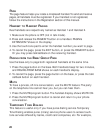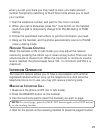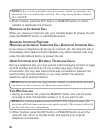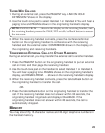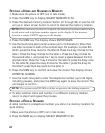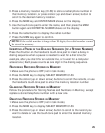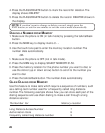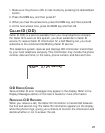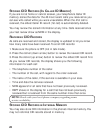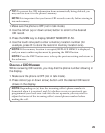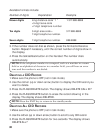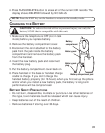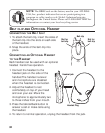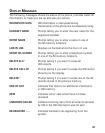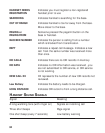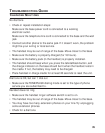
28
STORING CID RECORDS (IN CALLER ID MEMORY)
If you are not at home or cannot answer, your telephone’s Caller ID
memory stores the data for the 40 most recent calls you received so you
can see who called while you were unavailable. When the 41st call is
received, the oldest Caller ID record (1st call) is automatically deleted.
You may review the stored information at any time. Calls received since
your last review show as NEW in the display.
REVIEWING CID RECORDS
As calls are received and stored, the display is updated to let you know
how many calls have been received. To scroll CID records:
1. Make sure the phone is OFF (not in talk mode).
2. Press the cid/vol (down arrow) button to review the newest CID record.
3. Press the cid/vol (up arrow) button to review the oldest CID record first.
As you review CID records, the display shows you the following
information for each call:
• The telephone number of the caller.
• The number of the call, with regard to the order received.
• The name of the caller, if this service is available in your area.
•Time and date the call was received.
• NEW appears for all calls that have not been previously reviewed.
• REPT shows in the display for a call that has not been previously
reviewed but is received from the same number more than once.
NOTE: Check with your local phone company regarding name
service availability.
STORING CID RECORDS IN INTERNAL MEMORY
You may also store CID information in the phone’s internal memory. You
may not reformat CID records stored in memory.



